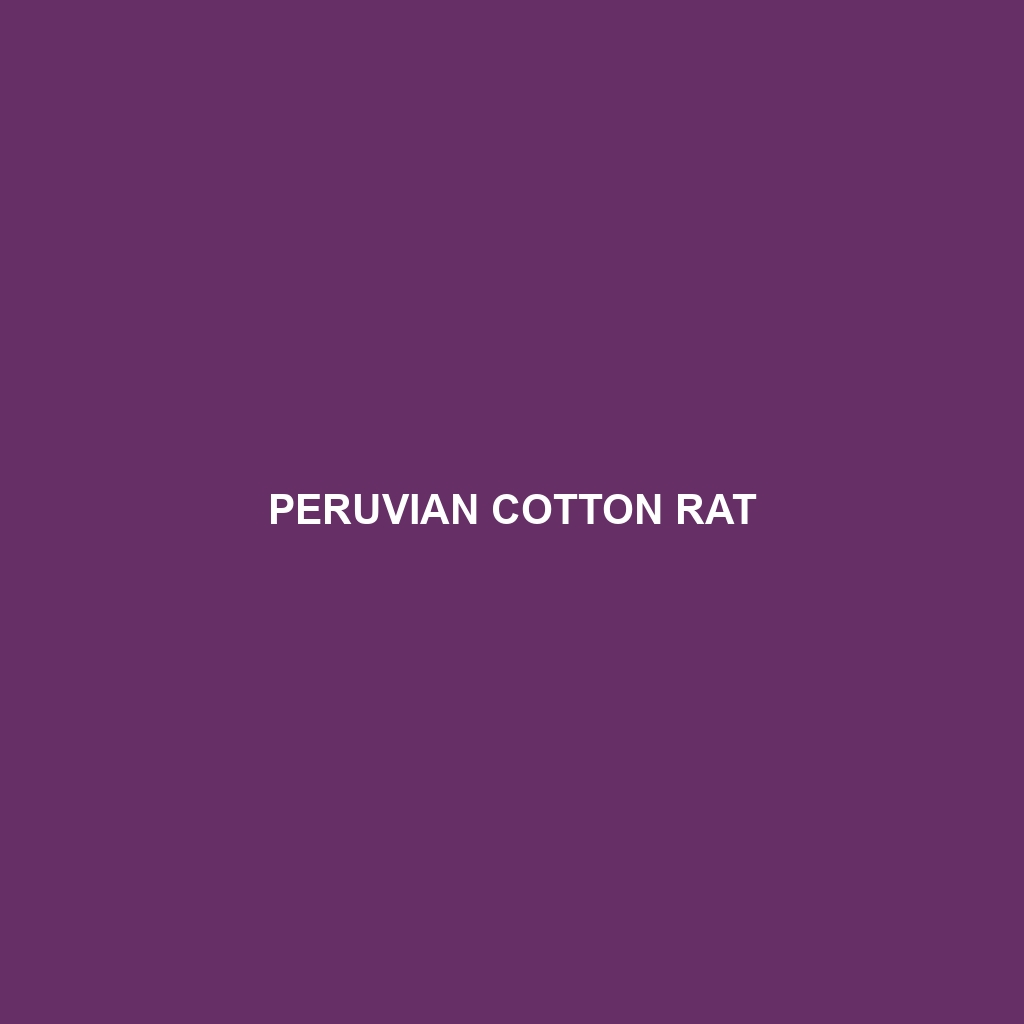Peruvian Cotton Rat Overview
Common Name: Peruvian Cotton Rat
Scientific Name: Sigmodon peruanus
Habitat
The Peruvian Cotton Rat primarily resides in the grasslands and wetlands of Peru, particularly in regions near rivers and lakes. It is commonly found in the coastal and Andean foothills of the country, thriving in environments with dense vegetation that provide adequate cover from predators and access to water sources.
Physical Characteristics
The Peruvian Cotton Rat is medium-sized, averaging between 18 to 25 cm in length. Its fur is generally brown or grayish in color, often with lighter underparts, which helps it blend into its natural habitat. This species has a robust body, a long tail that is roughly the same length as its body, and large eyes that indicate its nocturnal nature. Notable features include its prominent whiskers and large ears, which aid in its sense of hearing and awareness of surroundings.
Behavior
Peruvian Cotton Rats are primarily nocturnal, exhibiting most of their activity at night when they forage for food. They are known to be social creatures, commonly seen in small groups or families. These rats build intricate burrow systems that not only serve as homes but also as storage areas for food. Their behavior includes frequent grooming, social interactions, and vocalizations, all of which contribute to their social structure.
Diet
The diet of the Peruvian Cotton Rat consists mainly of herbaceous plants, seeds, and fruits. This rodent is known for its role in seed dispersal, which benefits the ecosystem. During the rainy season, they tend to forage more intensively, relying on their keen sense of smell to locate food sources. This variety in diet is essential for their survival and contributes to local biodiversity.
Reproduction
Peruvian Cotton Rats typically breed year-round, with peak breeding seasons matching the availability of food resources. Female rats can give birth to litters comprising 4 to 8 offspring after a gestation period of about 25 days. Maternal care includes nursing and sheltering the young, who are weaned around three weeks old. The young become independent after about two months, often staying close to their maternal burrow.
Conservation Status
The conservation status of the Peruvian Cotton Rat is currently classified as “Least Concern.” However, like many rodent species, they face threats from habitat destruction and climate change, which could potentially impact their populations. Continued research and conservation efforts are essential to monitor their habitats.
Interesting Facts
– The Peruvian Cotton Rat plays a vital role in its ecosystem as both a prey species and a seed disperser.
– They are adept swimmers and can navigate through water, which helps them evade predators while foraging.
– This species has been studied for its potential resistance to certain diseases, making it of interest to scientists and researchers.
Role in Ecosystem
The Peruvian Cotton Rat plays a crucial role in maintaining the health of its ecosystem. As herbivores, they help control plant growth, while their foraging habits contribute to seed dispersal and soil aeration. They are also an important food source for various predators, including birds of prey and terrestrial carnivores, thus linking multiple trophic levels in their ecosystem.
